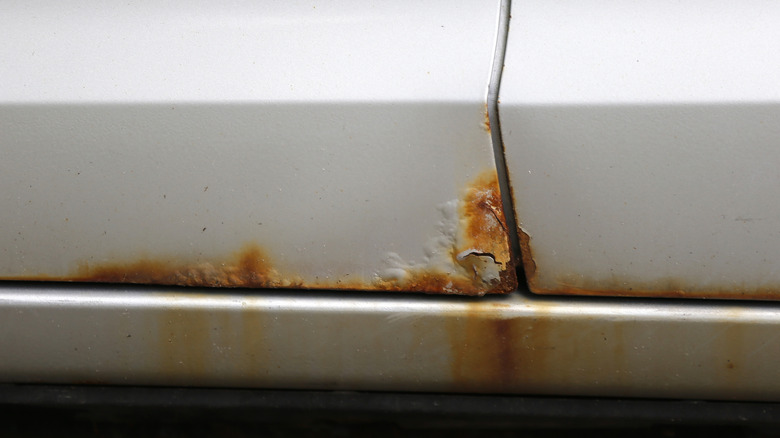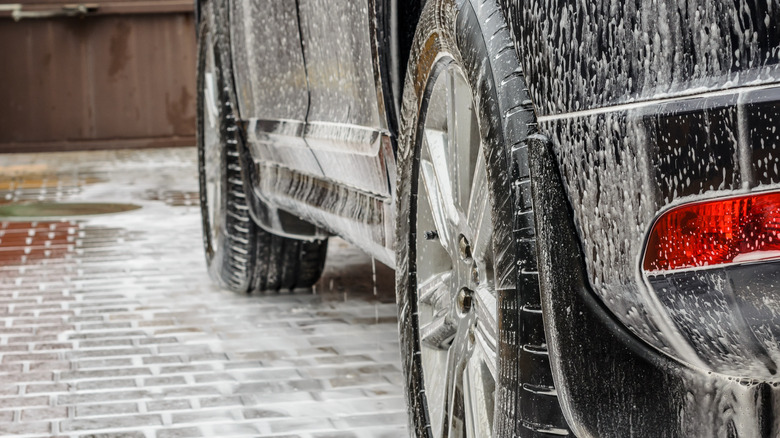If your car door is sounding like a front-loader washing machine, you will no doubt realize you need to drain your car doors. What a lot of car or truck owners don’t know is that regularly checking drain holes along the bottom of your car or truck doors is one of the many ways to protect your car from rust.
Advertisement
A car door is a simple device: It lets the driver and passengers in, while keeping the elements out. However, door and window seals are not perfect, and you don’t need to cross a river for water to find its way in. Leaving your car parked outdoors, going through a car wash, winding your windows down in the rain, even condensation can cause water ingress.
Door and window seals will deteriorate over time; becoming kinked, worn and torn, while drainage holes can become clogged with dust, debris, dirt, and rust. And if you do happen to drive your car into water, it can get in through the same holes designed to drain it out. The good news is that draining a car door is easy, and can also prevent the accumulation of water in the future.
Advertisement
Rust never sleeps: Why you need to keep your drain holes clear
Keeping water away from sensitive components — speakers, window-regulator motors, electronics, wiring, switches and sensors — is critical. To this end, most door cavities are divided into a wet side and a dry side, with a vapor barrier in between; usually a plastic sheet sealed to the panel with a bead of mastic or silicone.
Advertisement
The wet side of the door channels water down to a series of three or four drain holes along the bottom edge. These holes may be as small as a quarter-inch in diameter, and can easily become clogged. Ironically, they can also be blocked by rust prevention treatments: When poorly applied, the thick, tar-like coating can easily and accidentally cover over these holes.
In the long term, a build-up of dampness and dirt inside your car doors can cause rust to appear on the inner or outer door skins as bubbling paint. If left unchecked this can metastasize into the kind of cancerous rust you see on poorly maintained vehicles, sometimes running the length of the bottom of the door with rust marks bleeding down over the rocker panel beneath.
Advertisement
Unplug, drain, and go with the flow
First, wear appropriate protective equipment, particularly safety glasses, when working underneath a vehicle. To drain your car door, you will need to get down and dirty — either on your knees or back — to access the bottom sill of the door. Using a tool like a bamboo skewer, push into the drain holes to dislodge any debris.
Advertisement
The water flow should help clear the drain holes. A wooden tool is preferable to metal, which can scratch paint and create a site where rust can take hold, but you can also use a length of soft wire if necessary to carefully hook out any remaining debris. Even compressed air can thoroughly blow the drain holes out afterwards.
Manufacturers will often place a rubber bung on the inside bottom corner of each door on the opposite corner to the hinge. To quickly drain water from your car door, park on an uphill slope to pool the water in this corner, then pull the bung. If you are collecting a large amount of water in your doors, ensure your drain holes are properly cleared, then check and replace any offending seals — particularly the strip between the window and door. If water is getting into your car through a leaky windscreen, there are other measures you can take to help prevent the scourge of rust.
Advertisement


